This project focuses on generative assemblages made out of multiple identical modules. The design of the component and the iterative logic will influence the final assemblage. At first the focus lies on the design of the component and the connection points between each of them without adding occlusion. This results in a random growth that is influenced by the geometry of the component and the position of the frames.
The goal of this project is to come up with logic steps that will ultimately remove the random growth selection and filter the assemblage to one or multiple given criteria.
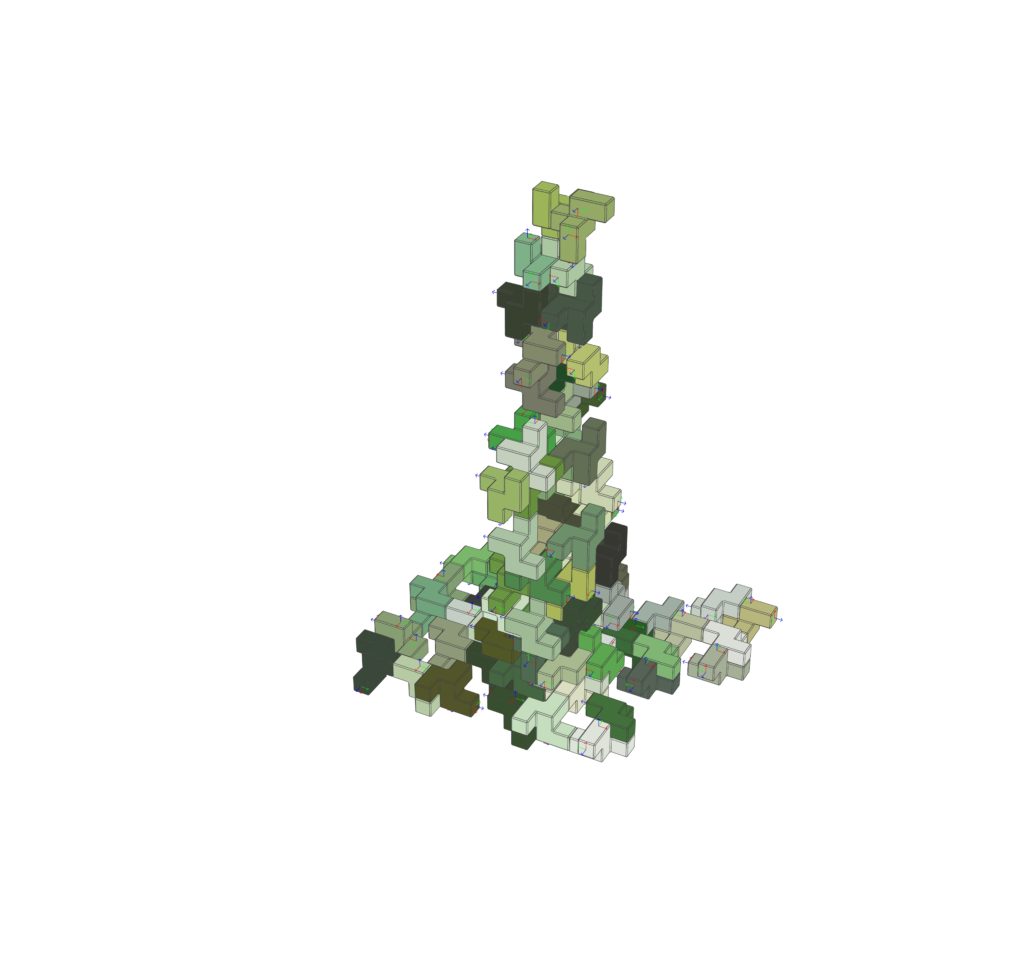
Component design
The first step is the design of the component and the position of the connection points. From this single component a catalogue of possible single assemblages can be created. The number of assembly “genomes” depends on the overall geometry of the component, the position and number of the connection points. Some connections are impossible because they are intersecting due to the position of the connections. These genomes will be filtered out.
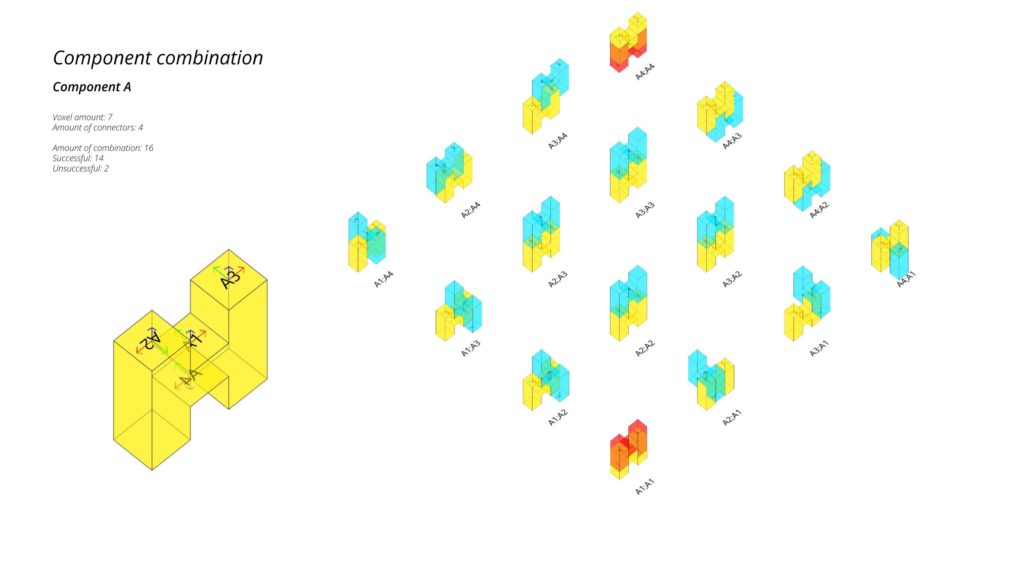
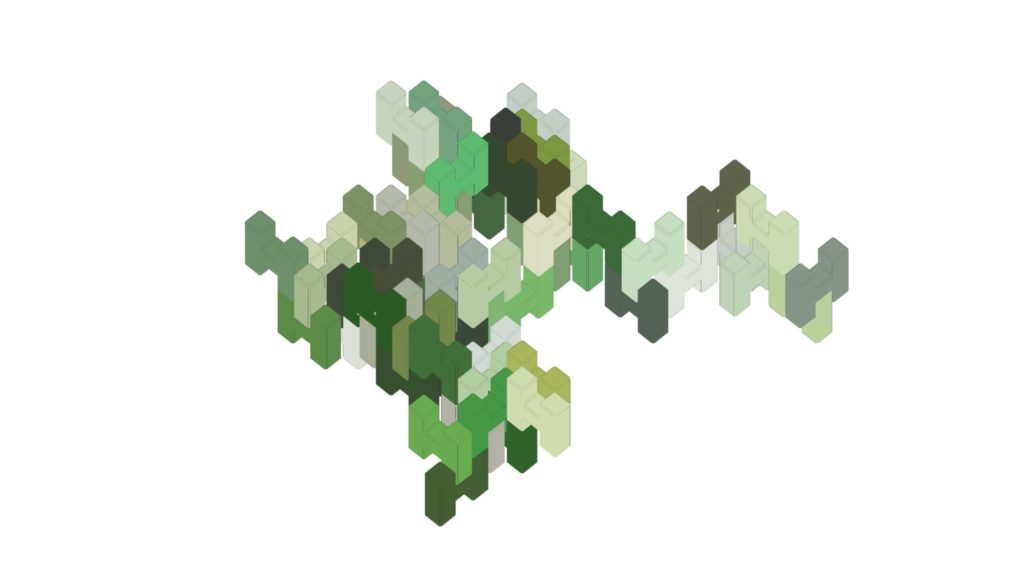
Different positions of the connection points and the geometry will influence the overall shape of the resulting iteration.
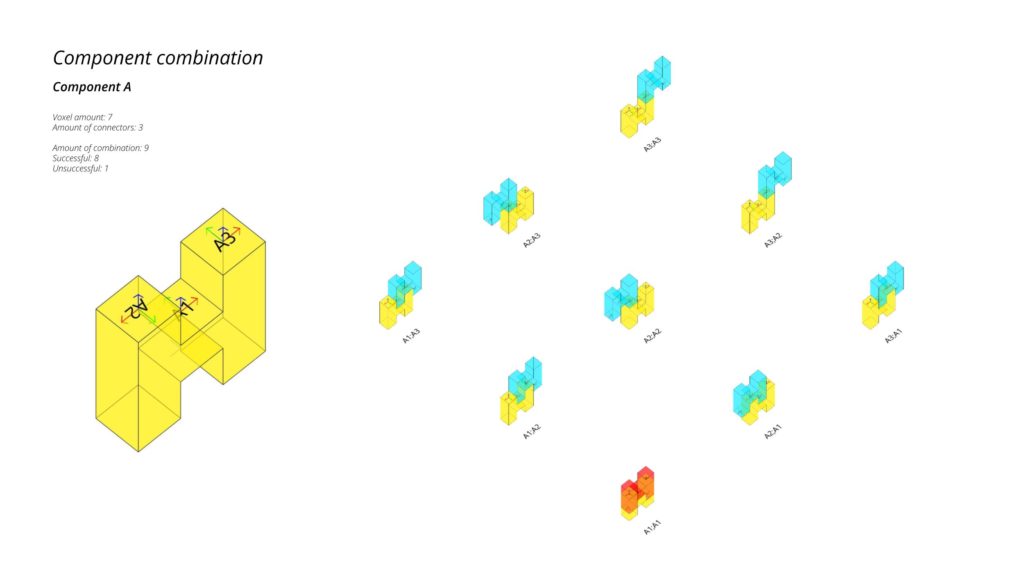
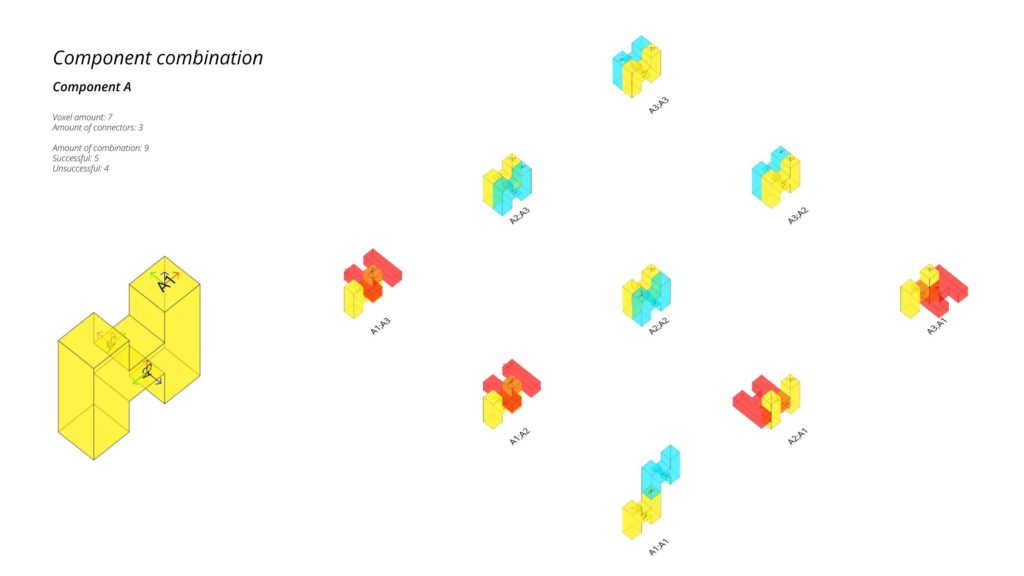
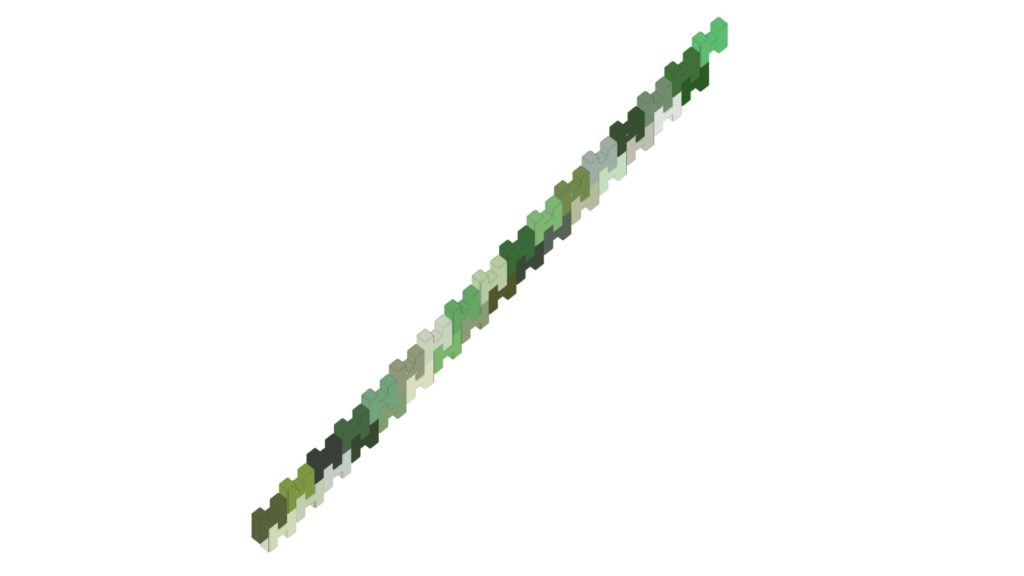
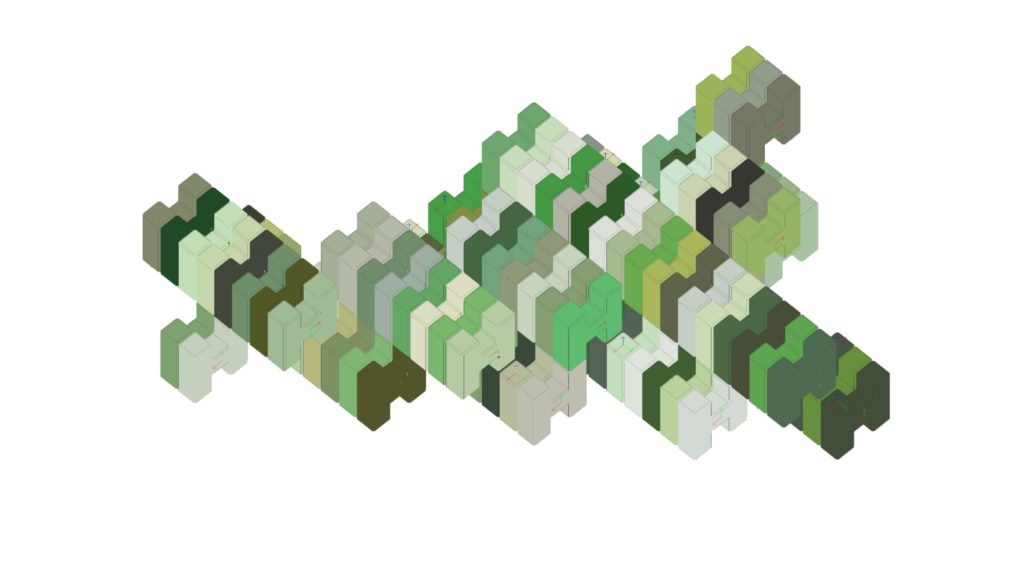

Growth Box
More controlled results can be achieved by removing the random growth selection criteria. By introducing a “Growth Box”, the component can only grow within the boundaries of the specified geometry by checking if the the next next growth candidate is inside or outside the set of specified coordinates.
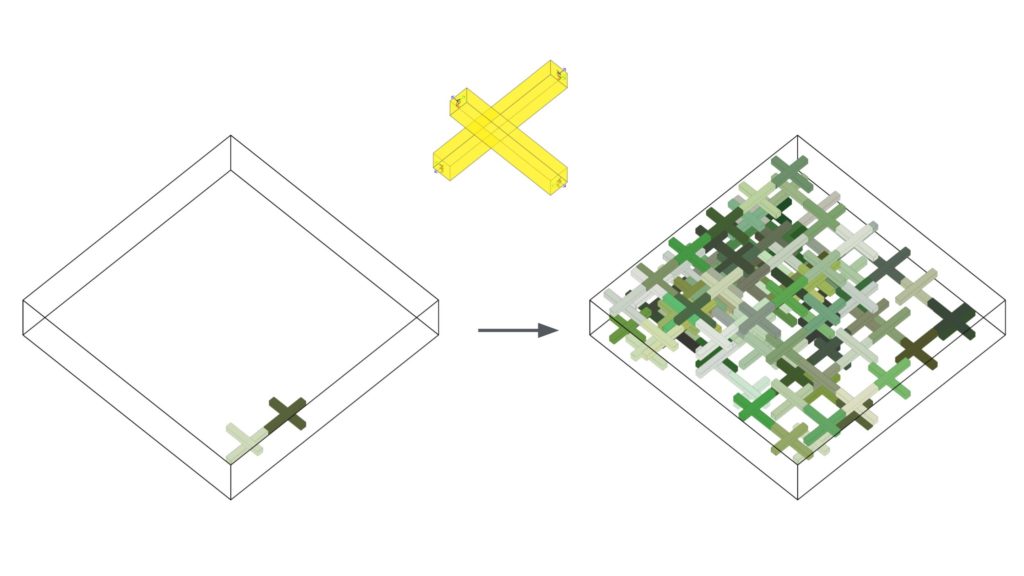

Slab to column

The Components are filling a base “Growth Box” until no more permutations are possible. If these conditions are met, the path of the iterative steps changes and starts to tell the components growth to follow a specified curve which in this case is vertical. As this method is very restrictive in terms of the different permutations that are possible, similar results can be expected whatever the shape and positions of frames.
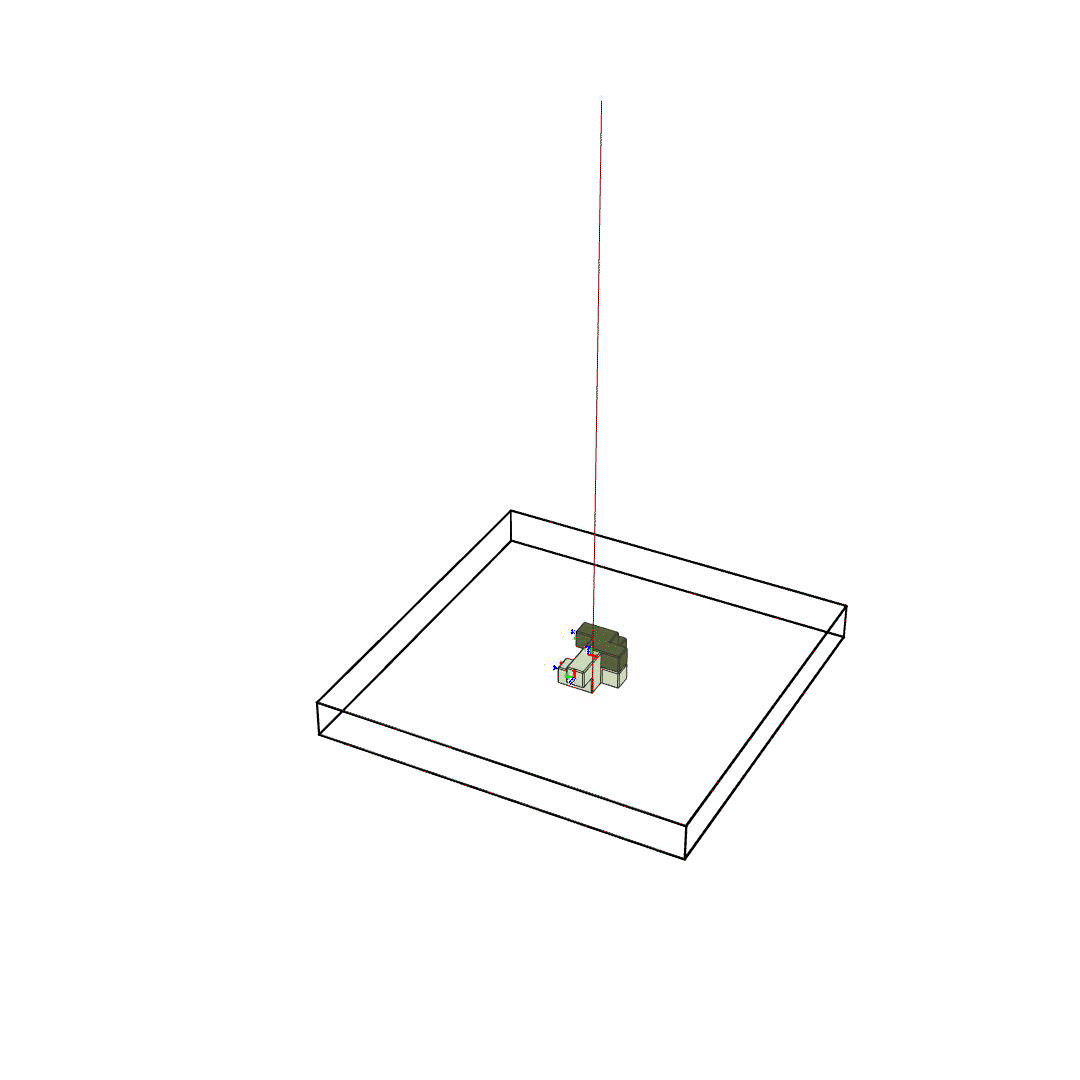
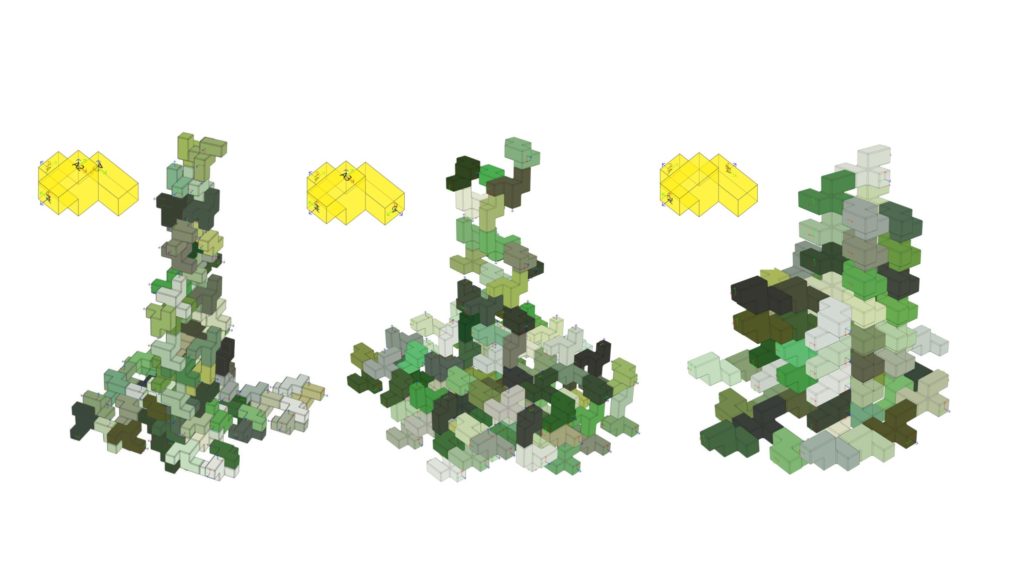
The positions and number of frames create slight differences in results. Some allow for a more compact growth than others.

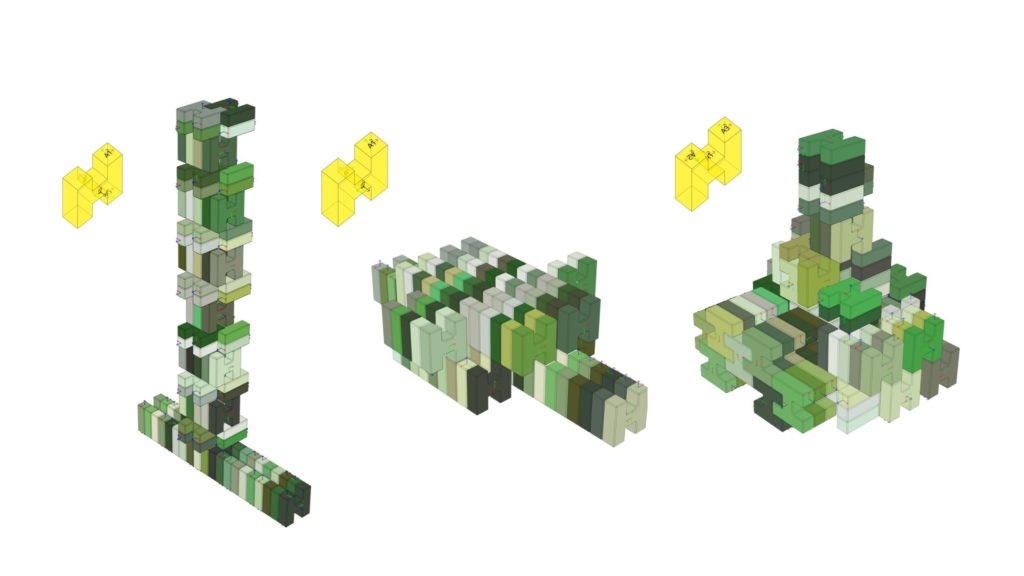
Column to slab
The reverse acts very similar as the original sequence. Some differences can be observed because the angle at which the component reaches the upper bounding box can be different and thus doesn’t allow for the exact same permutations.




